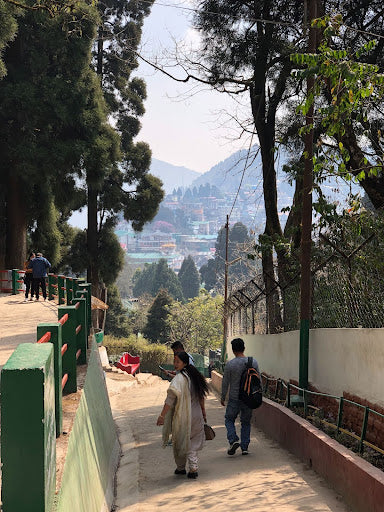Day 4: The Town of Darjeeling

Known locally as “The Queen of the Hills”, but actually meaning the Land of the Thunderbolt in Tibetan, Darjeeling was created from scratch by the British as a sanatorium and summer resort. The land that covers the broader district of Darjeeling was leased, and eventually annexed, by the British East India Company from the Raja of Sikkim in 1835. And the British set about building a road to connect the hill station, hotels in Kurseong and Darjeeling, and a series of comfortable private houses for ostensibly British government and military personnel. Over the next 10 or so years, the population rose from below 100 to over 10,000 with an influx of people from Nepal, Sikkim, Bhutan and the surrounding area.

The Darjeeling Mall, the pedestrian central square is a nice place to hang out away from the busy traffic of the rest of the town. Just down from this there is the bizarre apparition of the very British/Italian tea shop Glenary’s.



If you want a different experience of arriving in Darjeeling, you can take the narrow guage train from Siliguri to Darjeeling. It covers the 50km in about 7 ½ hours so not an express!

The city of Darjeeling now has a population of 120,000 still primarily native Nepalis, or Gorkhas. This rapid influx of people is both the cause of the overcrowding and poor quality of housing, but also the civil unrest that has never been far from the surface, and has led to 2 significant uprisings.
The Gorkhas have been demanding separation from West Bengal and the creation of a separate state since 1907 on the grounds that they are culturally and ethnically different from West Bengal. The Gorkha National Liberation Front led a popular uprising against the government from 1986 which came to a head in 1988 with the death of around 1,200 people. The uprising was diffused with the creation of the Darjeeling Gorkha Hill Council which administered the Darjeeling Hills from 1988 to 2011 with a degree of autonomy.
Agitation erupted again in 2013, and further in 2017. In 2017, the regional government announced that the Bengali language would be compulsory in all schools across the region. This was considered as a challenge to the independence of Darjeeling and led to a number of demonstrations both locally and in Delhi and ultimately to a total regional strike. This entirely shut down the region including transport, and of course the tea plantations. This strike continued for 104 days from June to September.
This had a considerable impact upon the local economy. The tea plantations, the backbone of employment and economic activity have struggled to get back to their previous strength: international customers went elsewhere due to the length of the shut down, there was a considerable outflux of workers, and the tea bushes, uncut for 3 months took time to return.
Tourism also suffered a considerable hit. Concern for safety kept international tourists away from 2017, and just as confidence was beginning to rebuild, Covid hit. In all the time I have been in Darjeeling, the only western faces I have seen have been the group I am travelling with. And from what I hear from the planters, this is not just an impression. Although Indian tourism in the region is building again, international visitor numbers are down considerably.

